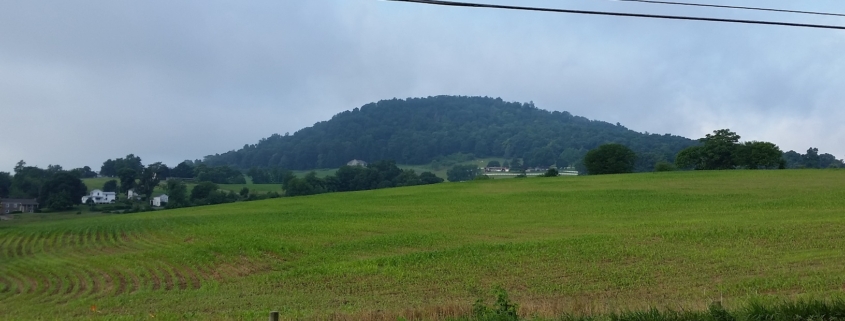The Volcano Near Fairfax County
A photograph of Mole Hill as seen along Route 33.
Article and photo by FMN Stephen Tzikas
When I travel to the Society of Amateur Radio Astronomers (SARA) annual conference every summer at the Greenbank Observatory in West Virginia, I drive along Route 33 just past Harrisonburg, VA, the home of James Madison University (JMU). It’s a rural road, but something unusual is found there – a volcano. It’s called Mole Hill, quite inactive today, but nearly 50 million years ago magma thrusted upwards to the surface through cracks in the lithosphere. The tree covered Mole Hill as seen today is made of remnants of the cooled magma column, eroding at a slower pace than the sedimentary rock around it. That resistant rock that supports the peak is a volcanic plug of olivine basalt. This basalt is dark greenish gray to grayish black, medium grained, and moderately porphyritic. Mole Hill is one of the youngest volcanoes on the east coast of North America. Mole Hill has a height of nearly 1,900 feet above sea level. Another extinct volcano, Trimble Knob, is a little closer to the Greenbank Observatory and a little farther from Fairfax County.
Dr. W. Cullen Sherwood of JMU, who passed away in 2016, gave a brief account of Mole Hill and its geology at the following link: https://csmgeo.csm.jmu.edu/geollab/vageol/outreach/fieldtrips/rockingham/molehill.html
His illustration gives the reader an idea of how Mole Hill may have originally appeared.
Mole Hill is mentioned in the Roadside Geology of Virginia book by Keith Frye. The books in the Roadside Geology Series are an excellent way to explore the geology around us when we travel along roads through different states. These books are available through Amazon.com.




